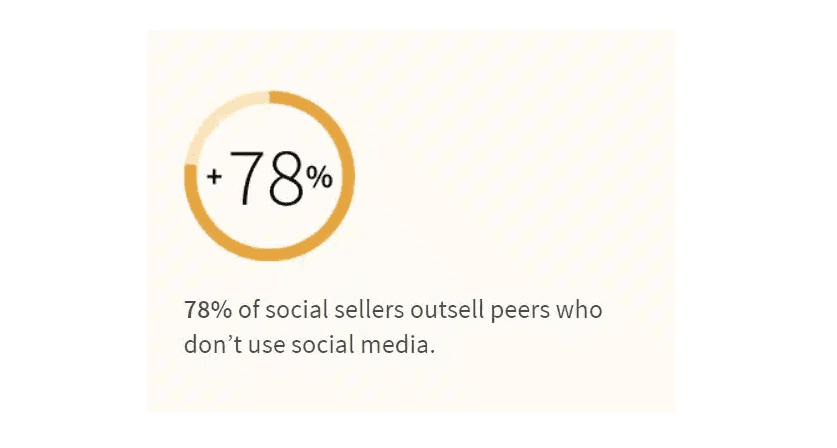7 Techniques to Help You Master the Art of Social Selling on Ecommerce
Whether you work in marketing, sales, or product design, you understand the importance of a quality landing page.

Nafih C
Nafih C
I am the Co-Founder and CEO of reviewbit, a SaaS application that empowers e-commerce brands to collect product reviews using chat apps. With a deep understanding of the importance of reputation management in today's competitive e-commerce landscape, I am committed to helping businesses leverage customer feedback to build trust, attract new customers, and drive growth.
Social media part of everyday life and an essential tool for businesses to connect with their target audience. With over 4.7 billion active social media users worldwide as of January 2023, businesses need to leverage social media to increase brand awareness, generate leads, and drive sales. That’s where social selling has emerged as a powerful strategy – especially for e-commerce companies.
You may be thinking: I already know this. We post daily on Twitter and LinkedIn as part of our social media marketing strategy. That’s a great start, but social selling is a bit of a different beast.
Social selling is about interacting with people, building relationships, and nurturing those relationships to strengthen trust and credibility with your brand and, ideally, leading a prospect to buy. Whereas social media marketing is a broad net strategy meant to reach many people and widen your potential audience or consumer pool, social selling focuses on one-on-one or one-on-few connections.
Why social selling is a powerful strategy
Before diving into techniques, consider why social selling is such a powerful strategy. According to a 2016 LinkedIn study, 90% of top-performing salespeople use social media and social selling tools as part of their sales strategy. LinkedIn also found that 78% of social sellers outsell their peers that don’t use social media.

But why?
We already know that consumers prefer personalization, but more than ever, consumers are influenced by brands. It’s not only about the quality of the product or price, but who is this company, and what are their values? This shift in buying decisions comes from Gen Z, who has grown online and with social media. Still, people of all ages have adopted a similar mindset.
A SurveyMonkey study found that 73% of consumers of all ages say it’s very important that brands share similar values. Additionally, 30% of millennials and 24% of Gen Zers say they are more likely to purchase from a brand that has a social media presence.
What happens if you don’t take advantage of social selling?
If your business or store isn’t leveraging social selling, you’re missing out on a significant opportunity to connect with your target audience and drive different types of sales. Relying solely on traditional sales techniques like cold calling, cold email, and advertising will cause you to fall behind competitors already playing the long game.
Customers converted through these methods may not be the best fit for your business, service, or product long-term, leading to increased churn and lower Customer Lifetime Value (CLV). A well-rounded sales strategy should take advantage of every sales channel that successfully brings you business.
In short, you leave money on the table if you’re not engaging in social selling.
Ways e-commerce brands can improve their social selling game
Social selling can be a game changer for most companies, especially e-commerce brands. By utilizing social media platforms such as WhatsApp, Twitter, and Telegram, you can connect with your target audience on a personal level and build relationships that can lead to long-term business success. Here are some tips and tactics to help you connect to your target buyer and streamline your sales process.
1. Build a strong brand with a foundation of great content
Building a solid personal brand is essential to successful social selling. You should build your brand on a foundation of great content and a willingness to help your target audience. That means sharing content your brand has created but also sharing relevant videos and articles from other respected and trusted sources and your thoughts and opinions about it.
How do you do that?
Understand your audience. What is your target customer interested in? What are their problems? By understanding your audience, you can create content that resonates with them.
Focus on quality over quantity. Creating a few high-value posts or comments is better than inundating the masses with throwaway links or GIFs.
Use visuals. Photos, videos, and infographics are more engaging, memorable (and easier to catch when scrolling through a feed).
Consistency is key. Consistency is essential when building a brand – it helps people begin to feel familiar with who you are and set expectations. So ensure your content is consistent in style, tone, and messaging.
Establishing yourself as an authority and thought leader in your industry can attract potential customers and build long-term relationships.
2. Focus on Relationship Building Rather Than Increasing “Transactions”
The key to successful social selling is to build long-term relationships. Rather than focusing solely on making a sale, direct your efforts to build a connection with your target audience.
You’ve been at the other end of a LinkedIn message or Twitter DM where someone is attempting to social sell you as the target buyer. You can tell how much thought or research someone put into contacting you. Were you the target persona for their product?
Take the time to research your target audience and personalize your outreach. Building a relationship takes time and effort, but it is crucial to the success of social selling.
3. Give value selflessly without an expectation of a return
Your social interactions and shares should provide value to your target audience without the constant end-game thought that this will lead to a sale. That value could be a great piece of written content, a free tool or template, a great deal you heard about, or even a short story or shower thought that might bring joy to someone’s day. You can even share user-generated content.
While the end goal of social selling is to make connections and increase sales, the repeatable piece of advice is that authenticity and heart are at the core of this strategy. Think about the value you’re providing to your audience and less about the value they’re providing to you.
Before you hit enter on your social post, ask: what value is this providing my audience?
4. Learn when to reach out to start conversations based on intent signals
Intent signals are actions your target audience takes that indicate their interest in your product or service. They help businesses understand their customers and tailor marketing efforts to meet their needs. They also show when someone may be open to hearing more about your products or brand.
Some examples include:
Subscribing to your store’s newsletter.
Liking or commenting on your post.
Opening a promotional email.
Visiting your online store.
Reading a blog post.
Timing is crucial in social selling. Learning when to reach out to start conversations based on intent signals is vital to successful lead generation. You can use tools like Google Analytics and Hootsuite to monitor intent signals and identify potential customers.
5. Leverage paid social advertising
Paid social advertising can be an effective tool for e-commerce store owners looking to generate leads and drive sales. By leveraging paid social advertising, you can target your ideal audience and reach potential customers who may have yet to find you.
You can use platforms such as Facebook Ads and Instagram Ads to run your paid social advertising campaigns. Make sure to carefully target your audience and create compelling ad copy and visuals to maximize the effectiveness of your campaigns.
6. Use social listening to identify opportunities
Social listening is monitoring social media channels to understand what people say about companies and their products. As an e-commerce brand and store owner, social listening can help you improve your brand awareness and social presence by providing insights into what your customers say about your products, competitors, and industry trends.
To use social listening effectively:
Start by identifying the social media channels where your customers are most active.
Monitor these channels for mentions of your brand, products, and industry keywords.
Use these insights to engage with your customers, address issues or complaints, and provide personalized customer service.
Social listening can also help you identify influencers in your industry and potential brand ambassadors. Building relationships with these individuals can amplify your brand’s reach and improve your social presence.
7. Showcase a painless customer journey
By streamlining the customer journey and showcasing that to your target audience on your website and social media, you can provide social proof to customers that your products and brands are worth their time and money. One way to do this is to showcase customer reviews and testimonials. For example, if someone posts a great review on social media and tags your brand, share that post along with a few kind and respectful words of gratitude.
Post and share when you’ve implemented new systems or made changes to your process to show you’re working with customers in mind to make their journey even better.
Some examples of streamlining the customer journey include:
Easy navigation. Ensure your
website is easy to navigateand products are clearly labeled and categorized.Fast shipping and delivery. Offer fast and reliable shipping to ensure customers receive their products quickie.
Simplified checkout process. Streamline the checkout process by only asking for essential information, offering various payment options, and streamline your company’s operations by
automating vendor payments.24/7 customer service. Offer (and deliver on) customer support available 24/7, whether by phone, live chat, chatbot, or a combination of all three.
Time to begin your social selling journey
Cultivating a community is much easier when you’ve built a strong personal brand where your customers hang out. Then, with the right community of potential customers, you are seen as a resource as you give value. And resources help people with the transformations they need to encounter through your product(s).
Mastering the art of social selling is crucial for e-commerce store owners looking to grow their businesses and succeed in a highly competitive market. But it’s important to remember that social selling is not a one-time event; it’s a continuous process that requires patience, persistence, and adaptability.
As you engage with your audience and build relationships over time, you’ll learn what works and what does not so that you can adjust your approach accordingly. To be successful with social selling, you’ll need to be open to feedback, learn from your mistakes, and stay up-to-date with the latest trends and best practices.
Following the techniques outlined in this article and staying true to your values and mission, you can establish a loyal customer base that will support your business for years. So go ahead and start building those relationships, and watch your e-commerce business thrive!
Leave A Comment?


